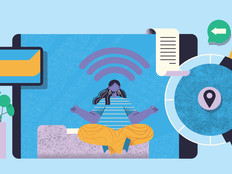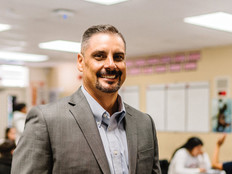Q&A: Fran McTigrit on Training, Teacher Input and Parent Support
A strong infrastructure, collaboration and a balanced budget helps Katy Independent School District seek out digital equity. Director of technology customer services Fran McTigrit tells us more.
EDTECH: What does “digital equity” mean to you?
McTIGRIT: In Katy (Texas) Independent School District, digital equity means all students have easy access to digital resources, both at school and at home, regardless of their economic status. It means a student can stop by the library and check out a device just as they would check out a book. It also means parents are informed about the digital contributions students are making inside and outside of the classroom. Our students are not only consumers and producers, they are also teachers, helping their parents learn about digital content.
EDTECH: What are the biggest challenges to achieving digital equity, and how do you meet them?
McTIGRIT: The biggest challenge is always budget. Katy Independent School District is one of the fastest growing districts in Texas, and almost all technology initiatives rely on bond funds rather than the general operating fund. Every three or four years we have to go back to our community to request approval of bonds to continue our work. Luckily, we have a great program, and our parents and community see the value of what we offer.

EDTECH: What is the most vital piece of technology for enabling this?
McTIGRIT: I don’t think you can identify one piece of technology that is most vital — it takes a team effort from all of IT to create an overall system that advances digital equity. A strong infrastructure, a single sign-on solution and a learning management system are three components that have helped ensure increased accessibility and advanced student learning in Katy Independent School District.
EDTECH: How important is teacher training?
McTIGRIT: Teacher training is vital to the success of digital equity. More than 700 teachers within Katy ISD have participated in a 10-hour course, The Connected Learner, and we recognize teachers’ efforts to support digital equity through a program we call Digital Star Teachers. These teachers ensure their students have the differentiated digital resources as well as the hardware to support their learning outcomes.
EDTECH: What role do parents play in achieving digital equity, and how do you get them on board?
McTIGRIT: Building community with parents is vital to achieving digital equity for our students. From the inception of our program in 2009, parent participation has played an important role. We use webinars and face-to-face meetings with parents to ensure the student is supported at home, and we offer parent-oriented panels and breakout sessions on a wide range of digital topics at PTA meetings and campus open houses.
EDTECH: How do you know your efforts are working? How do you measure success?
McTIGRIT: We use anecdotal evidence, survey results and test scores to measure success. Teachers report that time on task and student engagement has increased, as has the time available for instruction. The number of students with access to devices at home has grown by 10 percent in the last three years, while state test scores for students at our lower socioeconomic campuses have increased. And only about 0.2 percent of devices used by students have been lost or broken. This indicates that students are treating the devices carefully and that they appreciate having them available.
I also want to acknowledge the leadership that Darlene Rankin, director of instructional technology, has given to this entire project. Her tireless work and incredible drive to provide equity for our students is a major factor in its success.
EDTECH: What's the coolest or most exciting thing your district is doing to achieve digital equity?
McTIGRIT: We have earmarked sources such as our Campus Standard Change Funds, which allow teachers and students the opportunity to pilot items such as Chromebooks, robotics equipment and 3D printers, to name a few. All of these pilot programs have been adopted over the last few years and are greatly expanding the options available to all students in our district.
Part of the Rise to the Challenge series of interviews with top experts in K–12 education.








